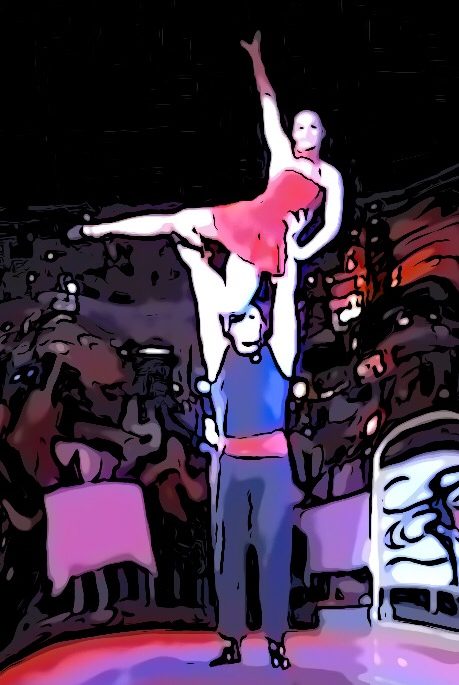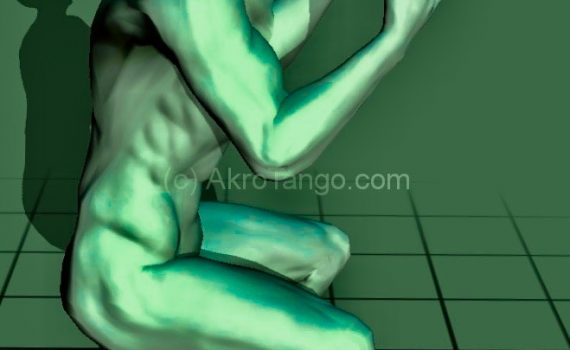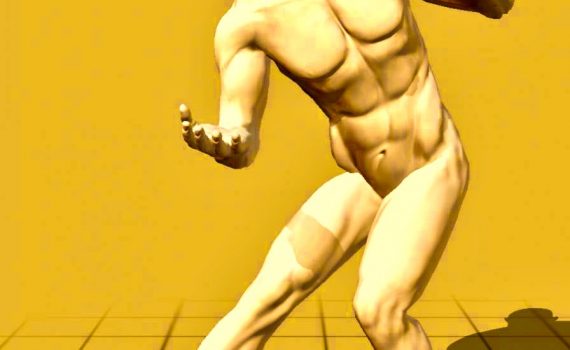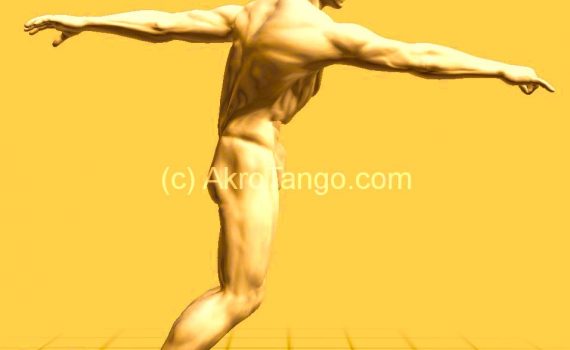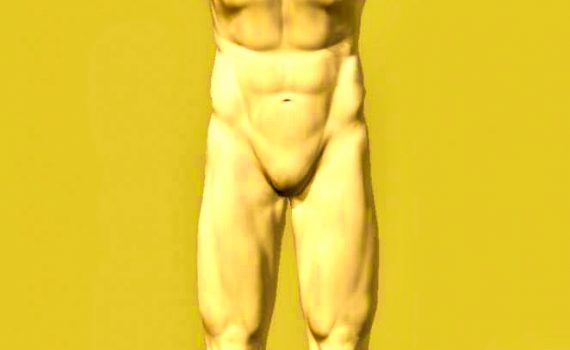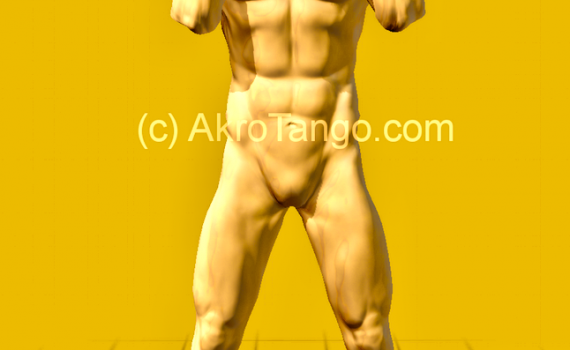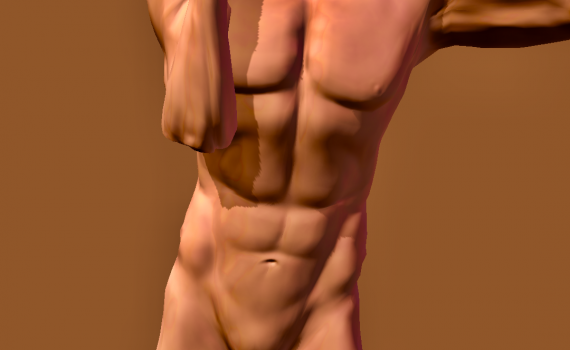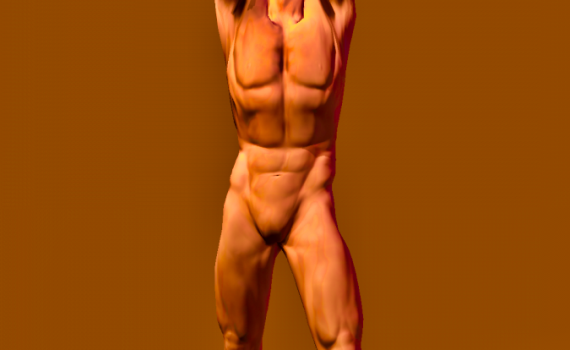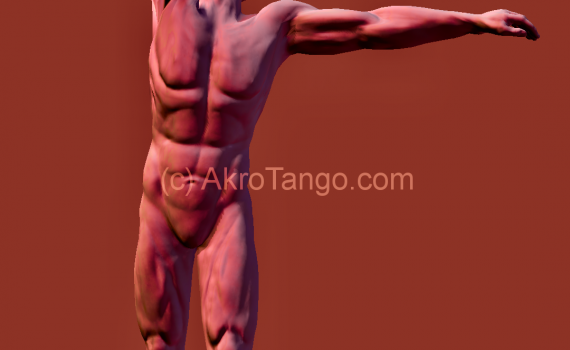In principle, it is possible to balance the flyer only over the contact point of the thighs. The flyer serves as a counterweight, while the thighs must be as horizontal as possible. The base balances in the interplay of knee and hip joints. With beginners it’s often observed, that those are pulled up on their tiptoes. For a stable balance, however, this should be absolutely avoided. Since the base with his center of gravity gets only with a lot of practice under the one of the flyer, this position is initially used only for a libra … see also special […]
Kategorie: standing
There are 2 possible positions for the balance on the forearms: 1. Over the head Balancing above the head is similar for the base as the lower arm stand of the flyer. The balancing should work well first while lying down, before a couple dares into this position! In principle, the base may balancing on the forearms all positions of the flyer with 2 contacts. Only the entrance to the position limits the variations. For instance the standing flyer reaches the forearms only from the shoulder. This entrance requires expert level and looks like nothing special. Nevertheless, it certainly makes a […]
In this position, only forms of libra are possible. Pushing point is always the lower leg and pulling point can be the arm or the shoulder of the base. The average mobility of the shoulder in the back area upwards is limited. The base may compensate this somewhat by leaning more forward and / or only reach backwards with one arm. The flyer is here behind the base, so the base does not see the flyer and has to balance him without visual contact. Possible positions of the flyer: standing (chair) standing flag backwards standing (figurehead) handstand flag It can […]
The shoulder in the acrobatics extends from the neck to about (depending on the power of the base) to the middle of the upper arms, so room enough for several flyers! And that on both sides of the head. The shoulder is (unlike the hip) a floating joint, which means that it has no firm connection with the trunk skeleton. When the base pulls the shoulder to the neck, there is hardly any room left for one flyer. The most important ability of the base in this position is therefore to raise the upper arm without pulling the shoulder to […]
The center of gravity of the base, even if he is bowed far forward, is above his feet. The back is as straight as possible, with a slightly higher shoulder than the hip. The flyer will be balanced behind the base and thus without visual contact. In the balance (without the help of the hands), the base should imagine a large ball on his back, which he wants to prevent from rolling down. It must be avoided at all costs that the floor of the flyer will literally be pulled away from under his feet. Lying or sitting flyers are […]
The base holds his hands approximately shoulder width, as he would turn the hands of the flyer inwards when positioning more narrow. The palm is open so that the flyer has the largest possible space available. The thumbs are as close as possible to each other. The wrist is located above the upper arm and must never come before the elbows. The lower arms are aligned in the direction of the center of gravity of the flyer to ensure good stability against shear forces. The position “Base standing, short arm” is an important starting position for dynamic tricks in duo-acrobatics […]
In order to avoid shear forces when to enter the one-armed, the flyer must learn to lean actively from the middle of the body in the desired direction laterally. The axis of rotation for the handstand is the shoulder and when standing the hip! If the base does not prevent this leaning, the weight of the flyer tilts on one arm in a controlled manner until the center of gravity reaches above the axis of rotation and the base’s carrying hand. The base follows this tilting with his elbow … Then, when the weight has almost completely arrived in the […]
The balance on the straight arms takes place exclusively over the legs. Again, the picture of balancing a huge ball is very helpful. As soon as the flyer starts to tip out of line, it creates a rotation that balances the base as fast as possible. Simply staying with your hands under the flyer’s focus is not enough! Correcting with the shoulder or elbow inevitably leads to a bent line of force. This in turn results in either a hollow cross, or wastes a lot of power. Not to mention the lack of appeal for the audience. The lying flyer […]
This balance is relatively easy as long as the flyer is stabilized (e.g., sideways flyer or shoulderstand) or by the other hand of the base (e.g., cross-breaker at the leg or knot handstand at the upper arm). However, the balance without some form of stabilization becomes difficult. The entrance usually takes place via one of the stabilized positions … which are already manageable by advanced bases. Without picking up the residual weight from the stabilizing arm, this balance starts extremely shaky. If you have not automated the pick-up, you should practice it again with simpler positions (for example, with lying […]
